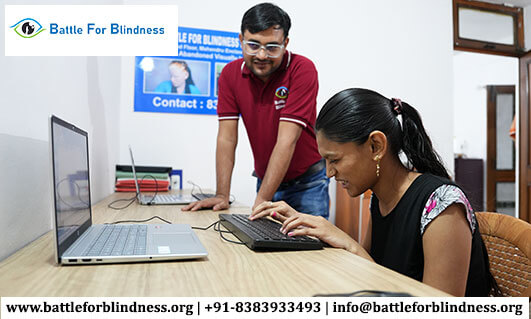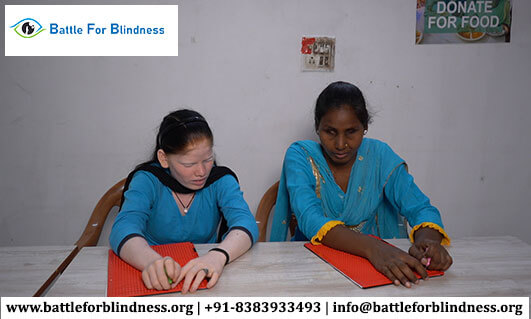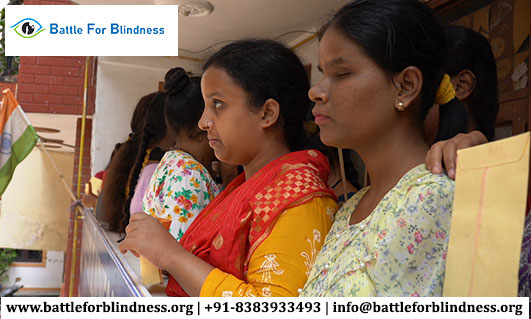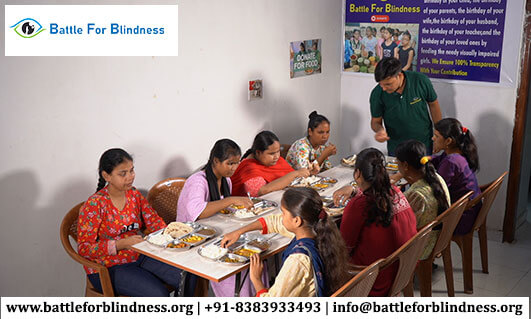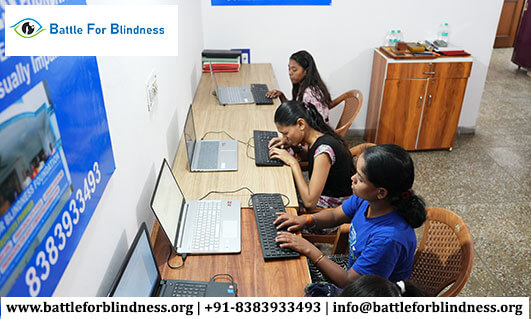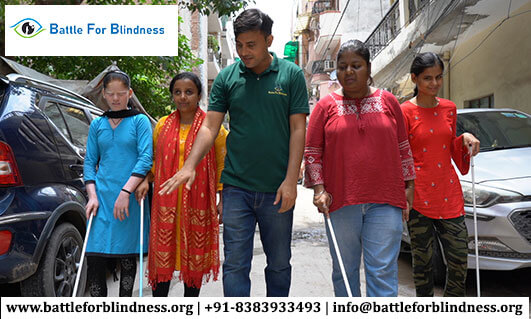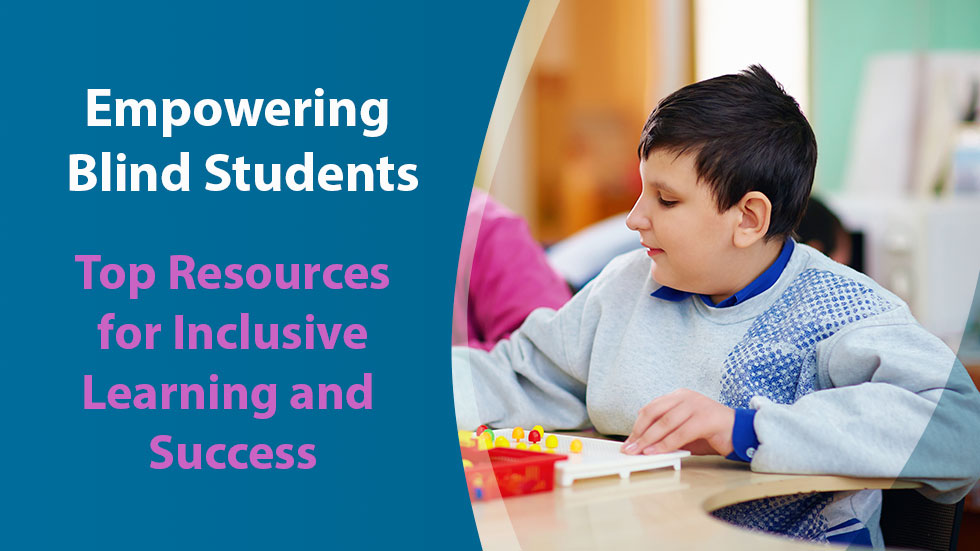
Inclusive education ensures that students with visual impairments have equal access to educational opportunities, helping them thrive academically and socially. For blind students, having access to the right tools and resources is crucial for their success in the classroom. In this blog, we will explore some of the best learning resources designed specifically for blind students to help them engage with their curriculum and achieve their educational goals.
1. Braille Resources
Braille remains one of the most effective tools for blind students, allowing them to read and write independently. Several resources make Braille more accessible in educational settings:
- Braille Books and Textbooks: Many organizations, such as the National Braille Press and the American Printing House for the Blind, offer a wide range of Braille books, including textbooks, literature, and specialized resources. These materials help blind students follow the same curriculum as their sighted peers.
- Braille e-Readers: Devices like the BrailleNote Touch Plus and Braille e-Book Readers allow blind students to access digital Braille content. These tools support tactile learning and provide the flexibility of portable digital texts.
- Braille Writers and Notetakers: Braille writers such as the Perkins Brailler and electronic notetakers like BrailleNote and Focus 40 can help blind students take notes during lessons and complete assignments with ease.
2. Screen Reader Software
Screen reader software is invaluable for blind students who rely on auditory feedback to access digital information. These programs convert text on a computer or mobile device into speech or Braille, enabling blind students to interact with educational content.
- JAWS (Job Access With Speech): One of the most popular screen reader programs, JAWS reads aloud text displayed on a computer screen. It’s compatible with a wide variety of software applications, including word processors, browsers, and educational tools.
- NVDA (NonVisual Desktop Access): NVDA is a free, open-source screen reader that supports many languages and works well with Windows operating systems. It’s a great tool for students on a budget.
- VoiceOver: For Mac and iOS users, VoiceOver is a built-in screen reader that works seamlessly with Apple devices. It offers a variety of accessibility features for navigating educational materials.
3. Audio Books and Podcasts
Listening to educational material through audio is a great way for blind students to engage with their lessons and study. Many audio resources are designed specifically for visually impaired learners, providing textbooks, literature, and more in an auditory format.
- Learning Ally: Learning Ally offers a massive library of audiobooks, including K-12 and college-level texts. Their books are narrated by human voices to make the learning experience more engaging.
- Bookshare: Bookshare is an online service that provides free access to audiobooks for students with disabilities. It has a vast collection of textbooks, novels, and educational materials, all of which are accessible in audio format.
- Podcasts for Learning: There are many educational podcasts tailored to blind students, covering subjects like science, history, literature, and current events. These podcasts offer an alternative way to engage with educational content while fostering learning and curiosity.
4. Assistive Technology Tools
In addition to Braille and screen readers, other assistive technologies can support blind students in their learning journey. These tools help enhance accessibility and enable students to engage more effectively with their curriculum.
- CCTV Magnifiers: While they may not be useful for all blind students, CCTV magnifiers are helpful for those with partial sight. These devices magnify printed text and can help students read materials that might not yet be available in Braille or audio format.
- Smartphone Apps: Many smartphone apps are designed to assist blind students with everyday tasks and learning. Apps like Seeing AI, Be My Eyes, and Aira can help with reading text, identifying objects, and navigating environments, making them valuable tools for independent learning and living.
- Talking Calculators and Math Software: Specialized tools like the BrailleSense U2 or accessible math software such as MathType are designed to help blind students learn math and science by converting visual information into audio or Braille formats.
5. Online Learning Platforms
As online education becomes more widespread, many platforms have started to incorporate accessibility features for blind students. These platforms use screen readers, audio content, and other assistive technologies to make learning more accessible.
- Coursera: Coursera provides courses from top universities and organizations. The platform supports screen readers and provides audio content for blind students.
- Khan Academy: Known for its interactive video lessons in subjects like math, science, and economics, Khan Academy offers transcripts and screen reader compatibility, making it easier for blind students to follow along with the lessons.
- EdX: Similar to Coursera, EdX offers free and paid courses. Many of these are accessible to blind students through transcription services and compatibility with screen readers.
6. Tactile Learning Resources
For hands-on learning, tactile resources provide an essential way for blind students to explore concepts visually. Tactile graphics and 3D models help to make abstract ideas more concrete.
- Tactile Diagrams and Maps: Tactile maps and diagrams help blind students understand spatial relationships and geographical concepts. These tools are especially useful in subjects like geography, biology, and physics, where visualization is key.
- 3D Printed Models: 3D printing has revolutionized the way blind students interact with physical objects. Educational institutions can use 3D printing to create tactile models of objects like planets, historical landmarks, or geometric shapes, making them more accessible for blind students.
- Tactile Learning Kits: Kits that include raised-text books, diagrams, and models help students engage with subjects like math, biology, and art through touch.
7. Support Networks and Training
Beyond physical resources, support from educators, peers, and mentors plays a crucial role in helping blind students succeed in their education. Various organizations offer specialized training and support to guide both students and teachers in fostering inclusive education.
- National Federation of the Blind (NFB): The NFB provides a wealth of resources, including advocacy, training, and educational programs designed to empower blind students and promote inclusive education practices.
- Teachers of the Visually Impaired (TVI): Specialized teachers trained to support blind and visually impaired students can provide tailored guidance. Many schools employ TVIs who work with students to help them access learning materials and navigate their educational journey.
8. Peer Support and Collaboration
Collaboration with sighted peers is an essential component of inclusive education. Encouraging blind students to participate in group activities, share ideas, and collaborate with others fosters social inclusion and improves their learning outcomes.
- Buddy Systems: Peer mentorship programs or buddy systems allow blind students to pair with sighted students for guidance and companionship. This system can support the student’s academic and emotional growth while promoting mutual understanding.
- Collaborative Online Platforms: Platforms like Google Classroom and Microsoft Teams provide accessible tools for collaboration, including audio and text-based communication, file sharing, and project management.
Conclusion
Inclusive education for blind students is about providing the right tools and resources to ensure they have equal opportunities to succeed academically and personally. With the help of Braille resources, screen readers, audio books, assistive technology, and tactile learning materials, blind students can access a wide variety of educational content and engage in meaningful learning experiences. Support from teachers, peers, and specialized organizations further enhances their educational journey, ensuring that they can thrive in a fully inclusive and accessible educational environment.
